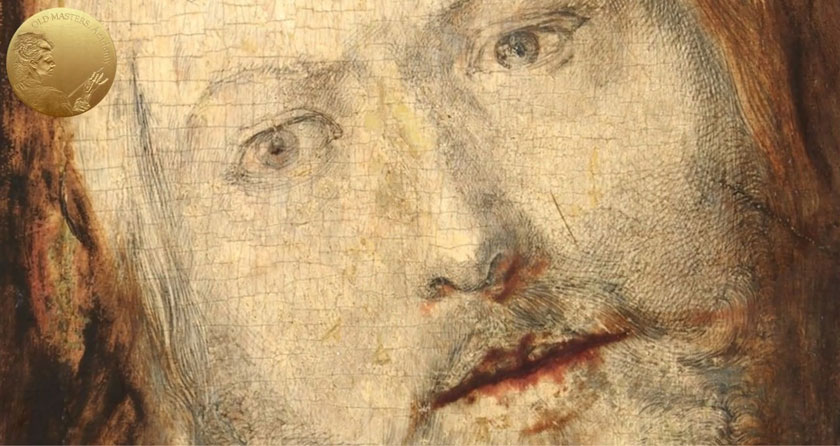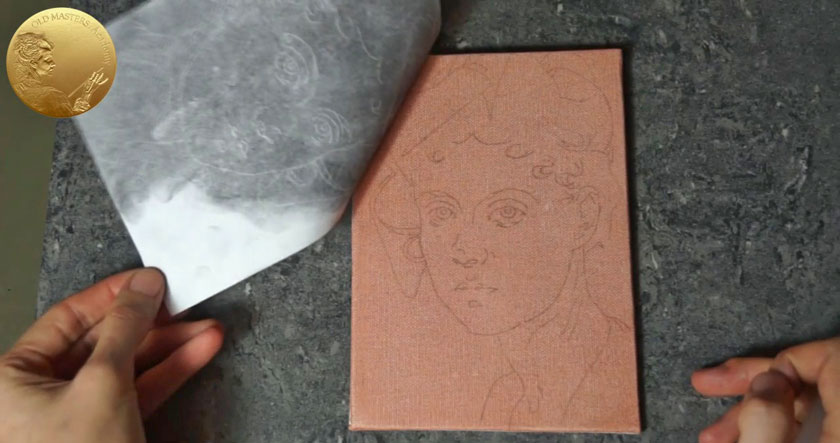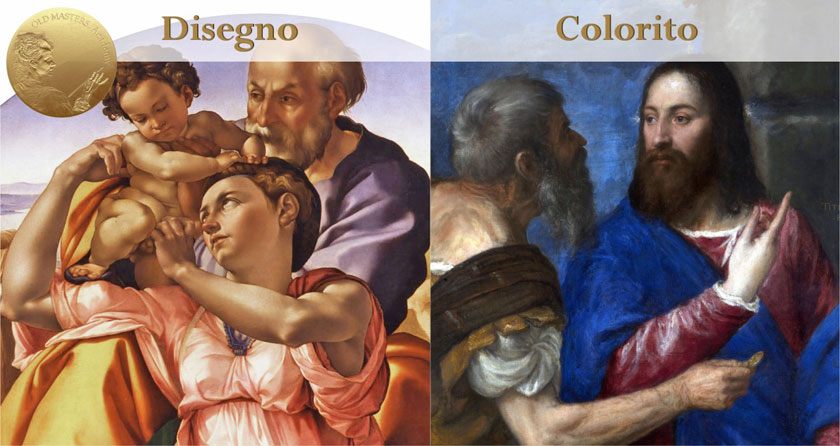Various Oil Painting Methods
Discover how to make an Underdrawing for Oil Painting
Learn how to paint like the Old Masters!
Old Masters Academy Online Course
Self-study, self-paced online video courseLifetime membershipOne-time payment: $487Enroll Now!Personal Tutoring online + Online Course
Unlimited tutoring by the Academy teachersLifetime membershipOne-time payment: $997Enroll Now!« Back to the Art Lessons List
Underdrawing for Oil Painting
The Early Northern and Italian Renaissance artists painted over a carefully executed Underdrawing transferred from the “cartoon” – a preparatory detailed sketch. Such kinds of paintings were based on line and precise drawing.

There is even a special term for it – “Disegno” (it’s Italian term meaning “design” or “drawing”). Here it is, our original preparatory sketch, made in a size that will suit the size of our canvas. We have to find an optimal way of how we can transfer the drawing on the canvas.
First of all, we have to delineate the portrait on a separate piece of paper, sized to the canvas size, which is 12×18 cm (5×7 inches). The drawing could be easily transferred through the window glass, so we do not need to have a lightbox for that. Just fix a piece of paper to the preparatory drawing with masking tape, and place it against a window glass. Now, we can easily outline the drawing.
Here it is – our outline, which we are going to transfer to the canvas. You can find the outline in our print materials, and use it in practicing painting techniques.
To transfer the drawing, we need to prepare charcoal powder. For that, we take a natural stick of willow or vine charcoal and scrape it into a powder.
Then, we should rub the charcoal powder into the paper from the reverse side of the sketch; just flick any excess powder off the paper.
After that, we fix the sketch to the canvas to eliminate any unwanted shifts while we do the transferring. For outlining, we choose a sharpened pencil; after we make a few lines, we can check the canvas to see if we should apply more or less pressure on the pencil while we do the transferring.

This is how our Underdrawing looks. If you find that the lines are too bold, we can partially erase them with the soft kneaded eraser.
Not all of the Old Masters relied on Underdrawing in their painting process. Venice and Baroque artists skipped this step. They formed a completely opposite manner of painting called “Colorito” – they usually didn’t do precise Underdrawings. On the contrary, they could start work directly on the canvas with a Brush Sketch.

So, Underdrawing is not an absolute must, but an optional stage in oil painting. Whatever we choose in our artist’s career – to rely on Underdrawing or not, we have to try to use it and see what kind of limitations it brings and all the benefits that it can provide.




